Ferrari has taken the wraps off the SF90 Stradale, unveiling the supercar at its Pista di Fiorano home circuit in Maranello. The automaker’s first series-production plug-in hybrid – which derives its name from the 90th anniversary of the foundation of Scuderia Ferrari and the long-established link between the automaker’s track and road cars – rolls in as the range-topping model in its product line-up.
Leading the list is of course the powertrain, which combines a turbocharged V8 engine integrated with three electric motors, two of which are independent and located on the front axle, with the third – known as the MGUK (Motor Generator Unit, Kinetic) due to its derivation from the Formula 1 application – at the rear, housed between the engine and the gearbox.
The mill is based on the familiar F154 unit, but it is, as Ferrari technical director Michael Leiters says, a unit with a totally new architecture, with only a few parts carried over. Capacity has increased, a larger 88mm bore taking it from 3,902 cc to 3,990 cc, and the intake and exhaust system has been completely redesigned.
New bits include a narrower cylinder head with a central injector running 350-bar, a larger diameter intake valve and a smaller-diameter fly wheel. Elsewhere, the turbo charger assembly has been lowered while the exhaust line is now higher, resulting in the tail pipes now being seated in the upper section of the rear bumper, and the exhaust manifold utilises Inconel instead of steel to lighten weight.
The unit develops 780 PS, an increase of 60 PS from the F154 seen in the 488 Pista and F8 Tributo, and 800 Nm of torque at 6,000 rpm. The three electric motors, meanwhile, offer a total of 220 PS (or 162 kW).
With a lithium-ion 7.9 kWh battery pack – housed behind the seats, and with cells made by SK Innovation – the SF90 has a 25 km all-electric operating range, using just the motors from the front axle (effectively making it the first front-wheel drive Ferrari when in pure electric mode). The two independent front motors allow all-electric operation up to 135 km/h.
Charging times weren’t listed, but Leiters says that it takes about three hours to get the SF90 juiced up via the plug-in route. The big question is if owners are likely to do so, or simply utilise in-car charging, accomplished through the engine.
The gearbox is also new, a completely-redesigned eight-speed wet dual-clutch transmission. Aside from new gear ratios and faster response, the unit features a more compact clutch assembly (20% smaller in exterior diameter than the seven-speeder) and is 10 kg lighter, three kg of which is the result of the reverse gear being eliminated, with that action now handled through electric drive. It also sits 15 mm lower than the current application.
The hybrid architecture adds around 270 kg in weight, but clever use of multi-material for the chassis – including carbon-fibre – has kept dry weight down to a very workable 1,570 kg.
Four drive modes are available, selected via the eManettino controller. The first is eDrive, which is the all-electric operation as mentioned earlier, and the next is Hybrid, the default setting when the car is turned on. This autonomously decides whether to keep the internal combustion engine running or switch it off.
The third mode is Performance, which keeps the engine running and prioritises charging the battery than on efficiency. Finally, there’s Qualify which provides maximum power output by allowing the electric motors to work at their maximum 162 kW, and prioritises performance over battery charging.
The car features more than 14 new innovations and debuts a host of firsts for the brand, among them 4WD, a step the automaker says is necessary in order to be able to put all that generated power fully on to the tarmac.
Performance numbers include a 0-100km/h time of 2.5 sec, a 0-200km/h time of just 6.7 seconds and a 340 km/h top speed, which according to Leiters is not electronically-governed. It’s much faster than a LaFerrari, as the pace on track shows – the SF90 was 64 metres ahead of the older car over the course of a lap in a head-to-head done on Fiorano.
More than 25 control systems are to be found, including an eSSC (electronic Side Slip Control) vehicle control system. Aside from torque vectoring, the system groups electric traction control (eTC) – which optimally manages the availability of the torque from both engine and electric drivetrains and distributes it to the individual wheels depending on driving conditions and grip requirements – under its umbrella.
There’s also RAC-e (rotation axis control – electric), an electronic cornering set-up regulator. Fully integrated into the car’s vehicle dynamics, this allows the front motors to provide torque vectoring. Speaking about the front motors, they provide performance assist up to speeds of approximately 210 km/h, at which point they are removed from the drivetrain equation to protect them from damage, Leiters revealed.
Also to be found is a new braking system, which features a new front brake caliper designed in conjunction with Brembo, improved cooling performance as well as brake-by-wire control. The latter manages kinetic energy recovery through the electric motors by implementing electronically-controlled mix of hydraulic and electric braking.
Under normal braking conditions, energy recovery using the electric motors is prioritised, while under hard braking, the hydraulic system intervenes to support the electric one. The system also provides more quantifiable trivia – the SF90’s braking distance is two metres shorter than the LaFerrari.
The exterior of the SF90 – which measures in at 4,710 mm long, 1,972 mm wide and 1,186 mm tall – is striking, and looks better (and flowier) in the metal than the studio shots suggest; no photography or video was allowed at the launch, so you’ll keep seeing these few images everywhere until more comes along.
Design cues include more compact overhangs, with the rear shorter than the front, and a frontward-shift of the cabin, which has also been lowered by 20 mm, to create a distinct cab-forward-type architecture. The car looks low slung, especially viewed from the rear.
Elsewhere, new narrow aperture headlights can be found, the design integrating with the brake air intakes to form a C-shape, and the units are equipped with matrix LEDs and active beam control. The tail lights also change styling direction, moving to a more squarish design.
Novelties include a suspended twin wing on the rear end section of the engine cover – one fixed and incorporating the third brake light, and one mobile with a wedge-shaped front area, based on that gleaned from the automaker’s F1 experience with drag reduction system (DRS).
Dubbed a “shut-off Gurney” by the company, the system essentially provides active aero in the form of system that regulates the air flow over the upper body, reducing drag at high speeds with low lateral dynamic loads and increasing downforce in corners, under braking and during directional changes.
Inside, the SF90 Stradale features a new cockpit layout, which the company says ushers in a new design direction that will carry over into its entire future range. Leading the improved HMI (human-machine interface) aspects is a new 16-inch curved high-definition digital instrument cluster, a world’s first in a series production vehicle. The display can be fully configured and controlled by the steering wheel control buttons.
The steering wheel is also new, and features a touchpad and a series of haptic buttons that allow the driver to control relevant operational aspects of the car just by using his/her thumbs. A new navigation system also makes its way on, as does a head-up display, part of the company’s new “eyes-on-the-road, hands-on-the-steering” philosophy. It even coined an EOTR-HOTS acronym for it.
Also making its debut is a new ignition key, personalised with the model’s name and a metal Ferrari shield faceplate. Featuring full keyless technology, the key will gradually be introduced across the rest of the model range.
There are also redesigned sports seats, which Leiters says are each 4.5 kg lighter than the current sports seats. Elsewhere, the gearbox controls feature a grille-style design that pays homage to the brand’s manual gear-shift gates of old.
Aside from the standard SF90, a version with a more sports-oriented specification will be offered. The Assetto Fiorano route includes significant upgrades, including special GT racing-derived Multimatic shock absorbers and a weight reduction of 30 kg, courtesy of carbon-fibre door panels and underbody as well as titanium springs and exhaust.
The version also gets a high downforce carbon-fibre rear spoiler, which provides 390 kg of downforce at 250 km/h, and specifically-designed, softer compound Michelin Pilot Sport Cup2 tyres. The SF90 rides on 20-inch wheels as standard, and these are wrapped with 255/35 front and 315/30 rear rubbers.
Pricing of the SF90 Stradale – which will sit above the 812 Superfast but below the next-gen LaFerrari, which is due sometime in 2022 – hasn’t been finalised and will be revealed in due course, but the lack of pricing hasn’t seemed to have discouraged buyers.
The car will be previewed at Fiorano to a good number of selected potential customers over the course of the next few days (where live photos will no doubt emerge), and according to chief marketing and commercial officer Enrico Galliera, most have already ordered the car, exceeding the company’s expectations of it. First deliveries of the SF90 Stradale will begin next summer.
Looking to sell your car? Sell it with Carro.

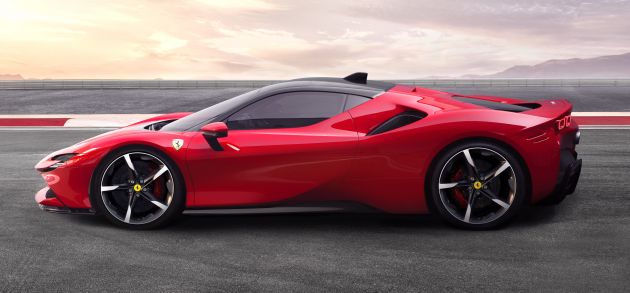
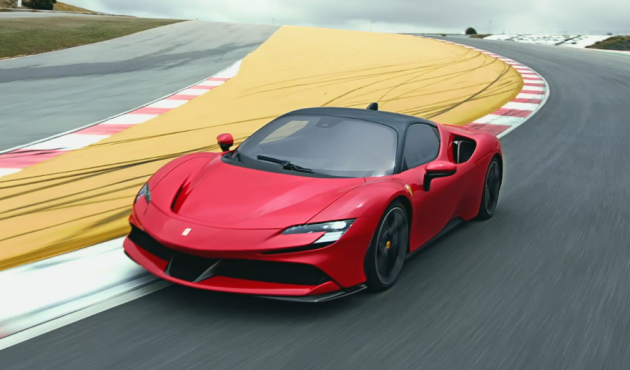
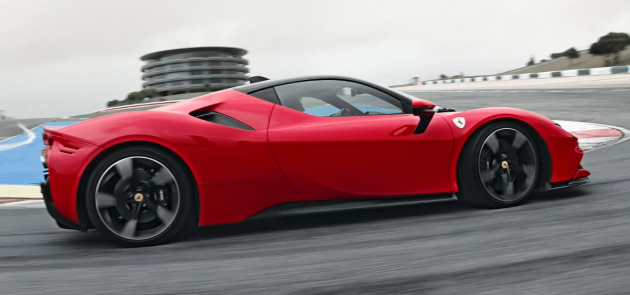





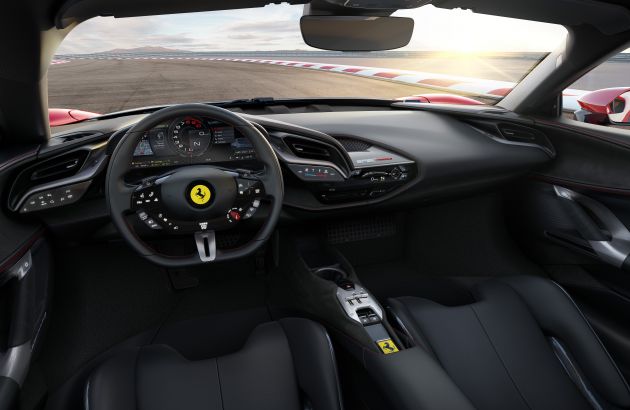
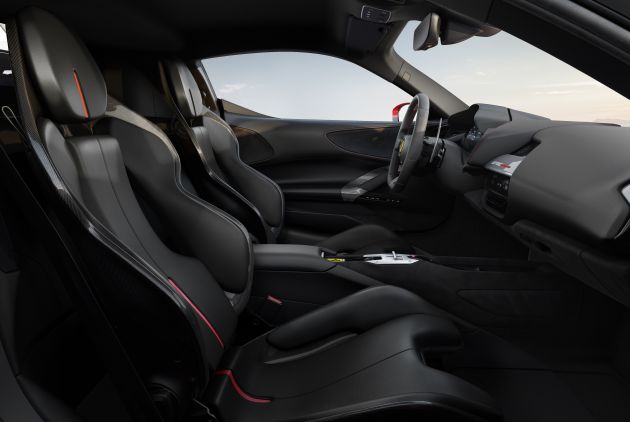


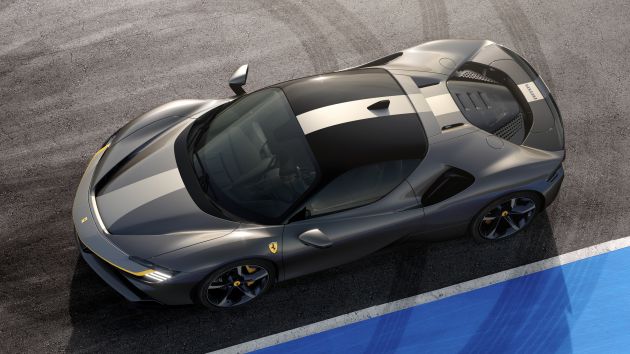


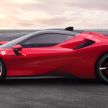

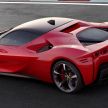

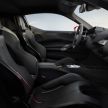

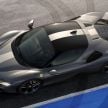
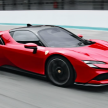

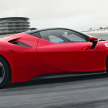
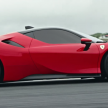
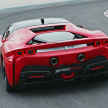
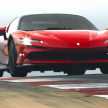
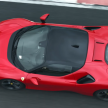
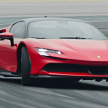
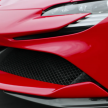
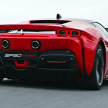
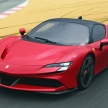
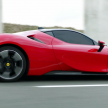
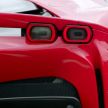
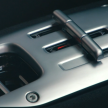
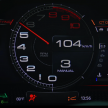
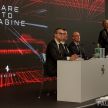

That lithium ion battery pack expensip to replace.
Yeah, no point going EV or hybrid route if the battery is expensive to replace unless the cars are super luxury like Ferrari. Even luxury passenger cars like Merc & Beemer, does have customers making huge fuss about the price of battery replacement.
Not to mention the environmental cost of lithium mining.
Tag Heuer still need to produce smart watch to keep up with market trend.
Looks amazing, like a fighter jet due to the blacked out top. Just like the original NSX. The tech is also staggering. They increased one gear, but eliminated reverse!! I’m assuming they use the motors turned backwards to achieve this. So that’s a pretty neat idea. Heck, even Honda/Acura didn’t figure out to use this method for reversing the NSX. What’s most amazing is that it is 156kg lighter than the hybrid NSX, which also has 3 motors though the NSX can’t be charged manually. How Ferrari still calls this a supercar is beyond me. Its statistics show a car that is close to hypercar territory. Its already faster than the LaFerrari.
It’s the first regular production Ferrari outside the limited class (F40, F50, Enzo and Laferrari) to extensively use carbon fibre in the chassis construction.
Holly crap! a fwd and rather ugly Ferrari has arrived
When sedans, estates, EVs and suvs are pushing 600 bhp and being tossed around the track with sub 4 seconds century sprint times , the goal post for true exoticas needs to be moved upwards to retain its title
Ferrari took the fight to Mclaren and all other mentioned earlier to solidify its status as a genuine thoroughbred exotica carmaker.
Exciting times ensues
The battery pack replacement will be able to purchase a new C class but then again what is money to the rich?
The rich also complains (https://paultan.org/2019/03/05/mercedes-benz-malaysia-introduces-hybrid-battery-extended-warranty-programme/) unless they are just fake rich.
Redline is at 8000 rpm. Same as 6A10 1.6 V6 in my Wira.
Design is rather too busy for an Italian car.
No reverse gear?
Please read carefully. It uses electric motor thus eliminating the reverse gear.